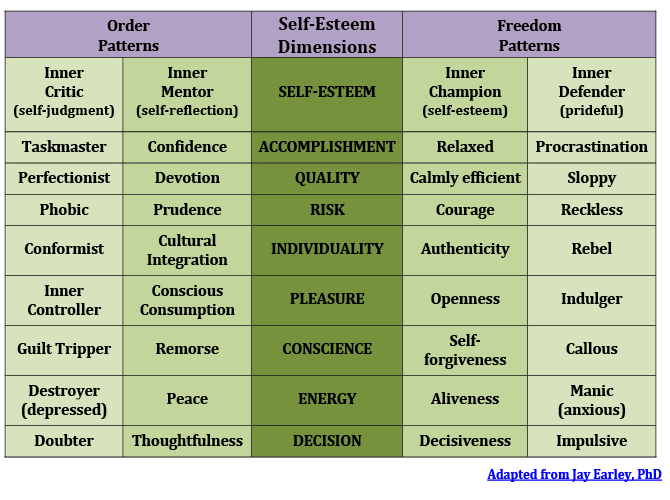This blog is one of a three-part series on the health impacts of integration (wholeness) in our self-esteem, relationships and ability to enact meaningful change in our lives.
Nothing ever goes away until it has taught us what we need
to know. Pema Chodron
As Chodron implies, if we choose to remain unconscious about how we express our thoughts, words and behaviours, we can find ourselves living in an adult body but navigating life with a juvenile mind.
Although each of us has unconscious patterns that result in unhealthy reactions, this is probably most evident in people coping with addiction. What those around the addict see is someone with an emotional and mental capacity stunted at the age when their addiction began.
When we restrict our human development in such ways so are we restricted in our ability to transform information into useable knowledge and then into unifying wisdom. IMHO, the journey we each travel in our lifetime is none other than the road to self-discovery and self-mastery, both of which are foundational to a healthy self-esteem. Self-esteem “reflects a person’s overall subjective emotional evaluation of his or her own worth. It is a judgment of oneself as well as an attitude toward the self. And, of course, a healthy self-esteem enables us to relate to others and respond to changing events wisely and confidently.
In the table below, the dimension of self-esteem reflects our dual desires in life for order on the one hand and freedom on the other. If you favour order in your life, you might find yourself identifying more with this pattern’s two archetypes — Inner Mentor and Inner Critic. Or, if freedom is a motivator of your thoughts, words and actions, then you may find yourself responding like an Inner Champion and Inner Defender. Review the nine dimensions below and circle the patterns you are conscious of in yourself as well as those you suspect may be more visible to others than to you.
 Once you have assessed your current self-esteem, create an inventory of those capacities or patterns you feel contribute most positively to your life. Now would be a good time to add these contributing factors to your resumé because a healthy self-esteem reflects both a high emotional and a social quotient, which are much sought after employee/team characteristics.
Once you have assessed your current self-esteem, create an inventory of those capacities or patterns you feel contribute most positively to your life. Now would be a good time to add these contributing factors to your resumé because a healthy self-esteem reflects both a high emotional and a social quotient, which are much sought after employee/team characteristics.
Some questions to consider before you move on:
- Do your contributing patterns favour a need for control or for freedom?
- In what healthy ways do you integrate your desires for order and freedom?
- How do you strike a balance between accurate self-knowledge and respect for who you are?
Now consider your inhibiting patterns of order and freedom:
- Which Inner Critic and Inner Defender patterns most cripple your growth?
- Do your inhibiting patterns reflect an over-controlling or out-of-control
tendency? - What one contributing pattern would you like to be more of?
If the checklist above feels too complex for you, then try this instead. The simplest measure of self-esteem is to look at yourself in a mirror and say out loud, “I love you.” Try it, and listen to your inner experience. If you find yourself cringing even at the thought of doing the mirror test, then very likely your self-esteem needs some bolstering. Many people feel embarrassed to even say the words aloud or to look at themselves in a mirror with that intent. If this is the case for you, I encourage you to practice this every day. You deserve it.
When you find peace within yourself, you become the kind of person who can live at peace with others. Peace Pilgrim
If you want more on integration and healthy self-esteem, click here.





